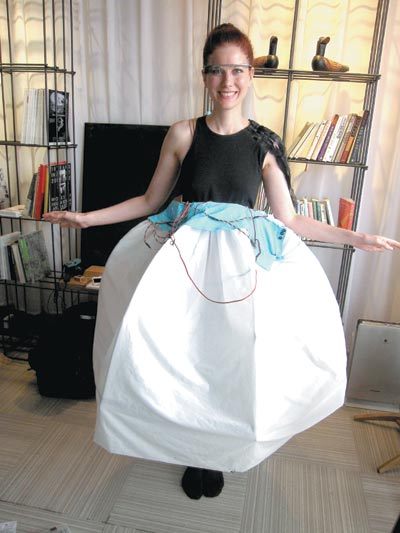Mechanical fashion: Wired to wear
 |
|
Anina Trepte models a robotic dress, which employs a portable battery pack, small motors and a micro controller. Zou Hong / For China Daily |
 |
| Highlights of London Fashion Week: Sept 14 |
 |
| Fashion reaction to iWatch slow, irrelevant |
Polish designer Michal Starost, who Trepte approached to make the "outer dress", faced the challenge of concealing all the mechanical and electronic parts. Starost decided to make room for them along the waistline and to construct the dress with silk, since he needed a fabric that would be "very light and springy to avoid an umbrella effect".
Its creators now want the dress to become more "intelligent" and to move as a result of changes in its environment, rather than the push of a button.
"We can set it to, if it's bright, dark or there's somebody near you, the dress can drop its skirt," says Bruce Bateman, the American CEO of Bateman Research and a wearable tech designer in Shanghai, who designed the robotic dress' mechanism.
Trepte adds: "We even have an app developer, and the idea is that you can dial up how high you want your skirt to be."
Professionals working at the intersection of fashion and technology expect such products to become part of everyday life in the near future. They see a time when ordinary people will be wearing clothes that are 3-D printed, solar powered or can protect against pollution. They also talk about garments that can monitor a person's vital signs and fabrics that can change colors to reflect a person's mood.
And some are thinking about how to wash these clothes, with all their wiring, gadgets and fancy parts. They may be high-tech, but they're still going to get dirty and smelly.
















